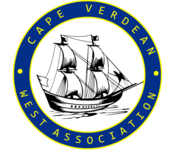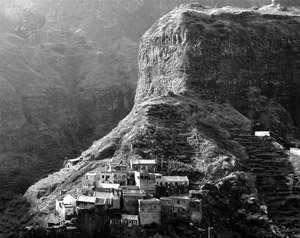OUR HISTORY
CABO VERDE
FACTS:
Area: 1,557 square miles. Form of Government: Republican
Landscape: Rugged volcanic islands GDP per capita:$1,330 (2000)
Population: 435,000 in June 2000 Occupations: farming, fishing, factories, services
Population growth rate: 2.4% Principal products: foodstuffs, fish, shoes bananas, textiles
Life expectancy: 69 years
Literacy rate: 75%
GEOGRAPHY:
Cabo Verde is made up of 10 islands and eight islets located in the mid-Atlantic Ocean, about 385 miles off the west coast of Africa, west of Senegal and Mauritania. It is slightly larger than Rhode Island. Crops can only be grown on one tenth of the land. There is very little rain, and sometimes it does not rain for many years. In earlier years, many people died of starvation or immigrated.
HISTORY:
Beginning 1400, the European countries started to explore the rest of the world. Portugal sent its ships down the African coast on the way to India and they discovered, in 1456, the Cabo-Verde Islands. The city of Ribeira Grande today (Cidade Velha) in São Tiago Island became, in 1462, the first permanent European settlement city in the tropics. Both Christopher Columbus and Vasco Da Gama visited Cabo Verde during their explorations. Cabo-Verde became a Portuguese colony for over 500 years. The Portuguese made Cabo-Verde, a center of the slave trade. Slaves were captured in Africa, sent to Cabo-Verde and then sent across the Atlantic to the West Indies and Brazil. In the 19th century, at the end of the slave trade, Cabo-Verde became an important stop for the whaling ships from New England. Later, as the sailing ships were replaced by those using coal, ships refueled there. Because of the droughts, many Caboverdians immigrated to other countries. Some went to Europe and Africa, but the largest number came to the United States, especially New England.
Cabo-Verde became independent on July 5, 1975. Aristides Pereira became the first President and Pedro Pires the first Prime Minister. The Government is responsible to the National Assembly and is elected every 5 (five) years. The African Party for the independence of Cabo-Verde (PAICV) ruled Cabo-Verde between 1975 and 1991. The Movement for Democracy (MPD) won the first (1991) and the second (1996) multi-party elections and the former ruling Party, PAICV won the third elections in 2001. Pedro Pires became President of the Republic with only 12 votes difference. These elections, which were universal, direct, and with secret ballots, were noteworthy for being completely peaceful free and fair and for being the first in the 1990s wave
of democratic elections in Africa. Cabo-Verde is considered to have one of the most democratic systems and best human rights record in Africa
CABO VERDE AND THE UNITED STATES:
Cabo-Verde and the United States have a special relationship. In the 19th century, whale oil was needed for lamps, and many whaling ships set out from New England. They found that Cabo-Verde was a good place to stop and get supplies and new sailors for their boats. Because of so many American ships stopped in Cabo-Verde, a consul (representative of the U.S. Government) was sent to Cabo-Verde islands in 1818 to help the Americans who stopped there. In 1843, the U.S. established the African Squadron in Cabo-Verde to catch ships, which were trading in slaves. The ships stayed until 1861, when they were needed for duty in the Civil War. There is a cemetery in Cabo-Verde where sailors of the squadron are buried. Many Caboverdians came to the United States, especially New England. Many of the crews of the whaling ships returned with the ships and then sent for their relatives and friends. There are as many people whose ancestors came from Cabo-Verde in the United States as in Cabo-Verde. The Caboverdians have held many different jobs in the U.S., but have been especially important in fishing and growing cranberries. The cranberries from Plymouth that we eat for Thanksgiving were probably picked by Caboverdian-Americans.
The Caboverdian-Americans keep up their ties with Cabo-Verde. They visit as much as they can and send money and goods to relatives and friends. Several times a year, a ship goes from New Bedford, Massachusetts to Cabo-Verde, with clothing, household goods, toys, and medicines. The United States and Cabo-Verde are good friends. Over the years, the U.S. has given assistance to Cabo-Verde. It has sent money and experts to help improve agriculture and conservation, build schools, desalinize sea water and improve health and education.. It has also sent a lot of food, since Cabo-Verde cannot grow enough for its people. When the food gets to Cabo-Verde, it is sold, and the money is used for conservation projects and to help people start small businesses. The Peace Corps also sends volunteers to teach English and improve health.





